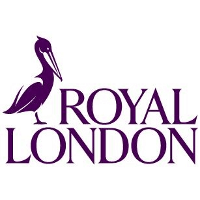Industry: Financial Services
Secure email for financial services
Protect sensitive communications
Join the trusted secure email service used by providers, advisers, and platforms to exchange confidential information safely.




Email risks in
financial services
Financial firms face increasing scrutiny to protect customer data. With cyber threats and compliance pressure on the rise, secure communication is no longer optional - it’s part of your fiduciary duty.
Mailock provides end-to-end encryption, recipient identity verification, and tracked delivery to help financial organisations send sensitive emails with confidence.
.webp?width=1036&height=712&name=board%20discussing%20mailock%20with%20unipass_compressed%20(1).webp)
Tailored for your organisation
Advisers
Providers & platforms
Consumer trust
Confidence in
every message
Building trust starts with protecting personal data. Mailock enhances the client experience by delivering secure documents directly to the inbox - no logins or portals needed. Customers can reply safely using their existing email address.
Unipass integrated: Mailock supports Unipass Identity to authenticate over 45,000 UK financial professionals.

Regulatory compliance
Built to support your compliance obligations
Mailock helps financial firms align with:
- FCA guidance on client data security
- ICO requirements under UK GDPR
- ESG goals through reduced paper use
- FCA expectations for digital-by-default “durable medium” delivery of MiFID-derived disclosures
Messages are protected with AES-256 encryption, authenticated before access, and tracked to provide evidence of delivery.

Plans
Options for every size of firm

Pro
For client communications
Email safely with an easy-use toolset for professionals and teams.
.jpeg?width=1500&height=998&name=Woman%20smiling%20in%20offer%20using%20laptop%20to%20secure%20emails%20next%20to%20colleagues%20(1).jpeg)
Enterprise
For high-volume contact
Protect all your sensitive outbound emails with our secure gateway.

Automated
For scaled digital delivery
Deliver customer comms at scale with automated secure email delivery.
Testimonial
It creates genuine bottom-line impact
Using secure email generates significant savings when you're delivering information that previously could only be sent by recorded post.

.png?width=1500&height=900&name=Man%20looking%20at%20computer%20and%20smiling%20slightly%20(1).png)

Questions?
Questions?
FAQs, answered
Is Mailock compliant with FCA and ICO requirements?
Yes - Mailock helps you meet FCA guidance and UK GDPR by encrypting data, authenticating recipients, and tracking delivery.
It also supports the FCA’s shift towards electronic communication as the default for many MiFID-derived disclosures, with paper still available on request.
Do my clients need an account to read secure emails?
No - recipients can open and reply to Mailock messages securely using their existing email, without needing to register.
Related content

The FCA’s Durable-Medium Shift: What Advisers and Providers Need To Know
Guidance for advisers and providers on preparing for the FCA’s durable-medium reform, with practical steps for secure, compliant digital delivery by January...
Beyond the Hype: Practical Lessons on Building With AI in Regulated Industries
Learn practical lessons on building AI in regulated industries, focusing on measurement, explainability, and culture to move beyond hype towards trustworthy...